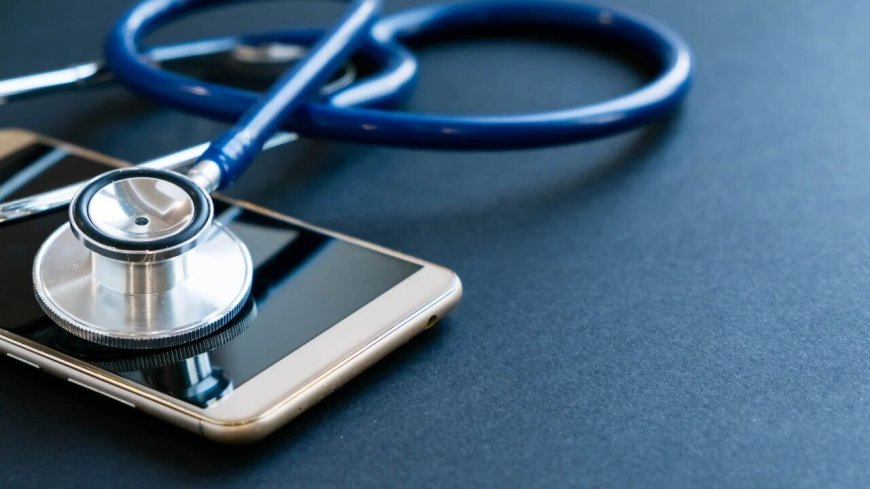Ultimate Guide to Understanding Diagnostic Test Results
Decode results from phone diagnostic software like Phone Clinix with this guide to understanding and acting on mobile test reports.

As smartphones become increasingly central to our lives, their performance and reliability are more important than ever. Whether you use your phone for gaming, business, or everyday communication, staying ahead of technical problems is essential. Thats where phone diagnostic software comes into play. It runs a full checkup on your phone, identifying issues and helping users make smart decisions about repairs or optimizations. But while running the test is simple, understanding the results can be a bit overwhelming.
This is where this guide comes in. In this Ultimate Guide to Understanding Diagnostic Test Results, well break down what each section of a diagnostic report means, what warning signs to look for, and how Phone Clinix, one of the most reliable phone diagnostic software tools on the market, helps users interpret and act on these results.
What Is Phone Diagnostic Software?
Before we explore how to understand the results, lets clarify what phone diagnostic software is.
Phone diagnostic software is a tool designed to scan a smartphones hardware and software components to assess functionality, performance, and health. It performs various tests across components like:
-
CPU and GPU
-
Battery and charging system
-
Memory (RAM and storage)
-
Sensors (gyroscope, accelerometer, proximity sensor, etc.)
-
Audio and visual hardware
-
Touchscreen and input devices
-
Connectivity (Wi-Fi, Bluetooth, SIM, GPS)
One of the leading platforms for these diagnostics is Phone Clinix, trusted by both mobile repair technicians and end-users for its depth, speed, and easy-to-read reports.
Why Diagnostic Results Matter
Diagnostic results are more than just technical datathey are actionable insights. By understanding what the data means, you can:
-
Prevent sudden phone crashes
-
Extend battery life
-
Optimize game and app performance
-
Decide whether to repair, reset, or replace your phone
-
Ensure your phone is operating securely and efficiently
Lets walk through the typical sections of a diagnostic test report and explain what each means in user-friendly language.
1. Battery Health and Charging System
What It Tests:
-
Current battery capacity vs original capacity
-
Number of charging cycles
-
Charging speed and voltage consistency
-
Battery temperature
What to Look For:
-
80% or more battery health is good; below that may require replacement.
-
High battery temperature (>40C) during use indicates overheating.
-
Inconsistent voltage or charging interruptions point to potential adapter, cable, or port issues.
Phone Clinix presents battery health as a percentage and provides color-coded alerts, making it easy to spot deterioration.
2. CPU and GPU Performance
What It Tests:
-
Processing power under load
-
Background app consumption
-
Frame rate performance for gaming
What to Look For:
-
CPU or GPU usage at 90-100% even when idle could mean malware or rogue apps.
-
High CPU temperature may signal overheating or poor thermal management.
-
Frame drops during graphics rendering indicate underperformance.
Phone Clinix gives real-time graphs of CPU and GPU usage, allowing power users to identify bottlenecks and performance spikes.
3. RAM and Storage Check
What It Tests:
-
RAM usage by system and user apps
-
Storage read/write speed
-
Available vs used space
What to Look For:
-
Low free RAM (under 20%) causes lag.
-
Slow read/write speeds (under 100 MB/s) affect app load time.
-
If storage is over 90% full, its time to delete unused data or apps.
Phone Clinix categorizes apps by resource consumption and flags unusually heavy usage, giving users control over memory optimization.
4. Touchscreen and Display
What It Tests:
-
Dead zones
-
Latency in response
-
Multi-touch accuracy
-
Display brightness and color uniformity
What to Look For:
-
Non-responsive zones or ghost touches indicate hardware issues.
-
Color inconsistency or flickering may suggest screen damage.
-
Delayed touch response is often a software or screen driver issue.
Phone Clinix uses an interactive touch grid and visual display test, making this one of the easiest sections to interpret, even for beginners.
5. Camera and Flash Testing
What It Tests:
-
Clarity and focus of front and rear cameras
-
Flash activation and brightness
-
Lens cleanliness or distortion
What to Look For:
-
Blurry, foggy, or dim images might mean hardware issues or dirt on the lens.
-
Non-functioning flash may indicate a hardware fault or software permissions problem.
Phone Clinix allows direct comparisons of captured test images to identify any degradation in photo quality.
6. Sensor Calibration and Function
What It Tests:
-
Accelerometer, gyroscope, magnetometer
-
Proximity and ambient light sensors
-
Orientation response and motion tracking
What to Look For:
-
Unresponsive sensors may affect auto-rotation, games, or AR apps.
-
Incorrect readings from magnetometer (compass) can mislead navigation apps.
Phone Clinix includes sensor calibration tools to fix minor alignment issues without a technician.
7. Connectivity (Wi-Fi, Bluetooth, SIM, GPS)
What It Tests:
-
Wi-Fi signal strength and drop rate
-
Bluetooth pairing and range
-
SIM card detection and signal strength
-
GPS location accuracy
What to Look For:
-
Frequent drops in Wi-Fi signal despite strong network could mean antenna issues.
-
Slow GPS lock or wrong location points to sensor failure.
-
SIM not recognized may be a hardware tray or software problem.
Phone Clinix provides connectivity logs so users can track inconsistencies over time and during use.
8. Audio and Microphone
What It Tests:
-
Speaker volume and distortion
-
Microphone recording quality
-
Headphone jack or Bluetooth audio output
What to Look For:
-
Crackling, low volume, or audio lag suggests speaker or amplifier faults.
-
Unclear or no audio recording indicates mic blockage or damage.
-
Bluetooth audio lag can be software or hardware-related.
Phone Clinix offers sample audio playback and voice tests to confirm clarity.
9. Vibration and Physical Buttons
What It Tests:
-
Vibration motor strength and function
-
Volume, power, and home button clicks
-
Responsiveness and consistency
What to Look For:
-
Weak or inconsistent vibration might mean motor damage.
-
Unresponsive buttons can be hardware wear or ribbon cable issues.
Phone Clinix checks actuation and response time for physical buttons, ensuring they're not causing input lags.
How Phone Clinix Makes Results Easy to Understand
While some diagnostic apps dump a flood of data with no context, Phone Clinix is built with user experience in mind. Here's how it helps users decode test results:
? Color-Coded Status Indicators
Each test result is labeled green (normal), yellow (warning), or red (critical), making it easy to prioritize fixes.
? Actionable Recommendations
For every flagged issue, Phone Clinix offers simple steps to fix or improve performancewhether it's clearing storage or replacing a battery.
? Professional-Grade Reports
Perfect for repair technicians, these reports are formatted for customers, complete with branding and timestamps.
? Historical Comparison
Users can compare current results with previous scans to track device health over time.
When Should You Run a Diagnostic Scan?
Here are some smart times to use phone diagnostic software:
-
Before and after major software updates
-
If you notice lag, crashes, or overheating
-
Prior to selling or buying a used phone
-
After dropping or water exposure
-
Monthly, as part of regular device maintenance
Regular use of Phone Clinix ensures your device stays in optimal condition and helps you avoid unexpected failures.
Final Thoughts
Understanding your phone's diagnostic test results shouldnt require a degree in engineering. With tools like Phone Clinix, even non-technical users can identify and address performance problems before they escalate.
From battery health to connectivity and touchscreen accuracy, phone diagnostic software breaks down the complexities of smartphone maintenance into manageable, actionable insights. The next time your phone feels sluggish or unresponsive, dont guessscan it, understand it, and fix it with confidence using Phone Clinix.
Your phone deserves more than guesswork. It deserves data-backed careand that starts with understanding your diagnostic test results.


































